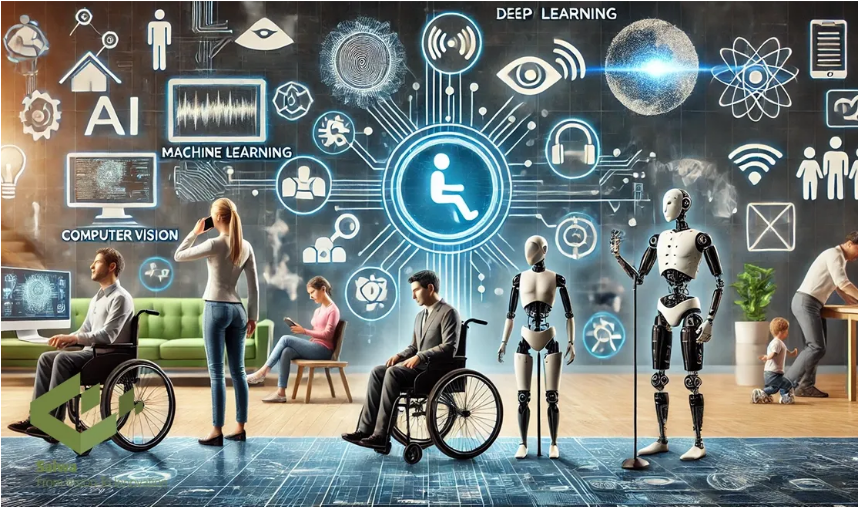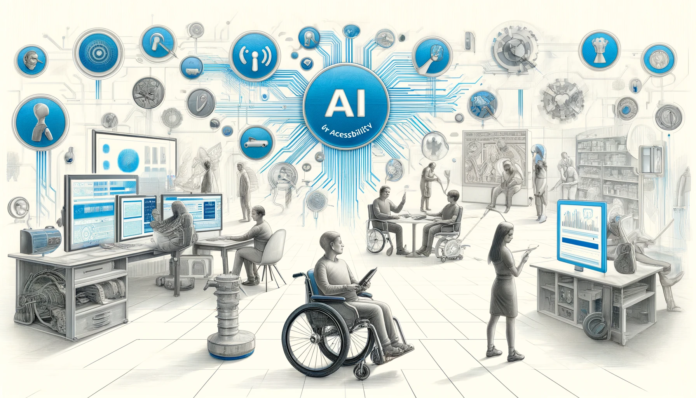AI tech provides mobile solutions to aid the disabled
Artificial Intelligence (AI) has made remarkable strides in recent years, and one of its most impactful applications is AI for Mobility Assistance. For people with disabilities, the elderly, or those recovering from injuries, AI-powered devices and systems are transforming how they navigate their environments and live more independently. This technology not only enhances physical mobility but also provides a renewed sense of confidence and autonomy.
The Role of AI in Mobility Assistance
AI in mobility assistance primarily refers to intelligent systems designed to help individuals move more freely and safely. These systems can include everything from AI-driven wheelchairs to exoskeletons and smart navigation tools. What sets AI apart in this field is its ability to adapt to the needs of each user, offering personalized support based on their unique mobility challenges. AI’s capacity to learn and improve over time makes this dynamic customization possible, making it a game-changer in assistive technology.
For instance, AI-powered wheelchairs can learn and adapt to the user’s environment, predicting their movements and adjusting accordingly. Some can even autonomously navigate through complex spaces, allowing users to move through crowded areas or difficult terrains with minimal manual input. This smart functionality helps people reclaim their mobility and independence in ways that were previously unimaginable.
AI-Powered Devices Enhancing Physical Mobility
One of the most exciting innovations in AI for mobility assistance is the development of exoskeletons. These wearable robotic devices support individuals with limited mobility by providing mechanical strength to help them stand, walk, or even climb stairs. AI algorithms in exoskeletons adjust movements in real time, responding to a user’s body dynamics to provide seamless support. This technology is especially beneficial for those with spinal cord injuries or muscular dystrophy, giving them the ability to perform movements they had lost due to their conditions.
In addition to exoskeletons, AI-driven prosthetics are making headlines. Unlike traditional prosthetics, which rely solely on the user’s muscle movements, AI-powered prosthetics use machine learning algorithms to anticipate and react to their needs. These smart prosthetics provide more natural movement and functionality, allowing users to walk or grasp objects with greater ease.
Also Read: AI in Fraud Detection
Smart Navigation Systems for Enhanced Safety
Beyond physical support, AI is also improving navigation for individuals with limited mobility. Smart navigation systems, often integrated with AI, offer solutions to help people safely and efficiently get from one point to another. These systems are particularly useful for the visually impaired, providing real-time guidance through voice prompts or haptic feedback. AI analyzes environmental data to map out the safest and most efficient routes, avoiding obstacles and ensuring users can confidently move through unfamiliar surroundings.
AI-powered navigation tools are not limited to indoor settings. Many are equipped with GPS and work in tandem with wearable devices like smart glasses or watches. This integration allows users to access real-time data on traffic conditions, roadblocks, or construction sites, ensuring their safety on the go. The ability of AI to process and predict such variables is invaluable in creating an accessible world for all.
AI for Mobility Assistance Impact on Emotional Well-being
While AI’s primary function in mobility assistance is physical support, its impact goes beyond that. For many individuals who rely on assistive technology, the loss of mobility is often accompanied by a loss of confidence and self-esteem. AI’s ability to enhance independence plays a significant role in improving emotional well-being.
Having control over one’s mobility means regaining the ability to participate in everyday activities that many people take for granted—whether it’s going for a walk, navigating a grocery store, or visiting friends and family. This boost in independence helps reduce feelings of isolation and dependency, contributing to a better quality of life. Furthermore, as AI systems become more intuitive and user-friendly, individuals are more likely to feel empowered and less burdened by the technology itself.

The Future of AI in Mobility Assistance
The future of AI for mobility assistance is full of promise. Researchers and tech companies are continuously
developing smarter, more intuitive solutions that cater to a broader range of needs. Shortly, we can expect to see advancements like AI-driven robotic caregivers, who will assist with daily tasks like transferring individuals from wheelchairs to beds or even helping them with personal care routines.
Another area of development is in AI-enhanced vehicles. Self-driving cars, powered by advanced AI systems, offer a glimpse of a future where individuals with disabilities can experience newfound independence in transportation. These vehicles, equipped with sophisticated sensors and AI navigation systems, will allow users to travel without needing a driver, breaking down barriers to accessibility.
Conclusion
AI for mobility assistance is transforming lives by offering people the tools they need to move freely and confidently. From AI-powered wheelchairs and exoskeletons to smart navigation systems and prosthetics, AI is redefining what is possible for individuals with mobility challenges. As this technology continues to evolve, it enhances physical movement and restores emotional well-being and independence. With ongoing advancements, the future holds even more possibilities for making the world a more accessible place for everyone.
For the latest AI news, in-depth reviews of cutting-edge tools, tutorials, and expert guides, visit Prompt Login today! Stay informed on AI and discover how technology shapes the future.




